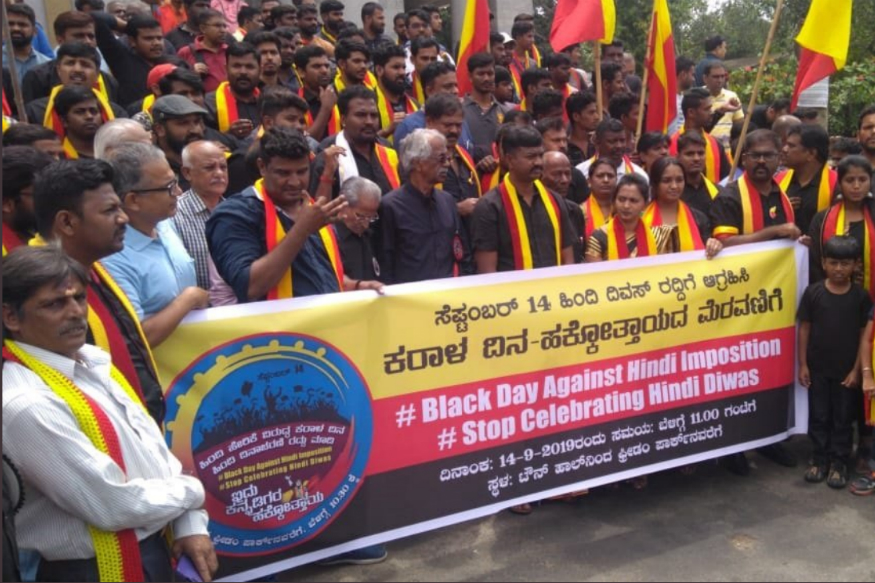
.jpg) Dr. John Singarayar
Dr. John Singarayar

India's linguistic scenery is as vibrant and complex as its cultural history. With over 120 major languages and thousands of dialects, the country's diversity is both a source of pride and a battleground for political and cultural identity.
At the heart of this struggle lies a decades-old debate: Should India prioritise a three-language policy—promoting Hindi, English, and regional languages—or embrace a two-language approach that sidelines Hindi in favour of regional tongues and English? This question has resurfaced with renewed intensity in recent years and months, fuelled by educational reforms, protests, and the ever-present tension between national unity and regional pride and identity.
The roots of this conflict trace back to India's post-independence era. In 1968, the Three-Language Formula was introduced to replace English with Hindi nationwide eventually. It encouraged states to teach the regional language, Hindi and English. While Hindi-speaking northern states like Uttar Pradesh and Bihar adopted this model, southern states such as Tamil Nadu resisted. For them, Hindi represented not unity but cultural domination by the North. Instead, they championed a two-language system, focusing on their native languages—Tamil, Malayalam, and Kannada—and English, which they saw as a neutral bridge to the broader world.
This historical friction reignited in 2020 with the Modi government's National Education Policy (NEP), which urged non-Hindi states to teach Hindi "wherever possible." Though framed as a suggestion, critics argued it was a backdoor tactic to impose Hindi, linking federal funding to compliance.
Tamil Nadu, with its long history of anti-Hindi sentiment dating back to violent protests in 1965, erupted in outrage. "They call Hindi the 'national language,' but India has no national language. This is about erasing our identity," said Ganesh, a student protester in Chennai. The NEP's ambiguity felt like a betrayal to many, echoing fears of linguistic homogenisation.
By 2023, the flames of dissent spread to Karnataka. When the state government proposed making Hindi compulsory in schools, Bengaluru saw massive protests. Activists and opposition parties accused the ruling BJP of undermining Kannada, the state's native language. "Hindi is not our culture; it is a political agenda," declared Kannada writer Vasudha Krishnamurthy.
In Tamil Nadu, activists took symbolic action, stripping Hindi signage from metro stations and shops—a defiant rejection of what they termed "linguistic colonialism." Chief Minister of Tamil Nadu, MK Stalin, framed the resistance as a fight for Dravidian heritage: "We will not let Hindi bulldoze our history."
Proponents of Hindi, however, paint a different picture. Leaders like Uttar Pradesh's Yogi Adityanath argue that Hindi is essential for national integration: "It unites us all. Those opposing it are dividing the nation."
The proponents of the language argue that economically, Hindi's prevalence, spoken by 43 per cent of Indians, offers practical advantages, opening doors to jobs in northern markets. Yet, for non-Hindi speakers, this logic rings hollow. "Language is not just communication—it is memory, history, and resistance," asserts Tamil scholar Ram.
The debate also exposes stark class and caste divides. Rural India, where 65 per cent of the population resides, relies heavily on state-language education. Without fluency in English or Hindi, students here face limited opportunities, perpetuating cycles of poverty.
Urban elites, meanwhile, flock to English-medium private schools, cementing a divide between those who can navigate global markets and those left behind.
The caste dimension adds another layer: Historically, upper castes monopolised Sanskrit and English, while lower castes were marginalised. Today, promoting Hindi as the "people's language" risks sidelining non-Hindi communities, reinforcing what Dalit activist Anand Teltumbde calls "upper-caste dominance."
Technology has emerged as a new frontier in this battle. Government apps like Aarogya Setu, which initially lacked Tamil and Kannada options, sparked accusations of digital exclusion. Social media campaigns like #StopHindiImposition trend regularly, reflecting grassroots resistance.
Decentralising language policy, investing in teacher training, and promoting regional languages in tech and media could preserve diversity while fostering unity.
India's linguistic struggle is ultimately a referendum on its identity. Can a nation of such staggering diversity thrive without imposing uniformity? The answer, perhaps, lies in embracing coexistence over coercion.
As Nobel laureate Amartya Sen reminds us, "India's plurality is its identity. To destroy that is to destroy India itself." The Tamil farmer's pride in his language and the Hindi clerk's aspirations need not clash. In a democracy as vast and varied as India's, linguistic justice is not merely policy but a promise.